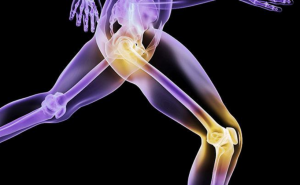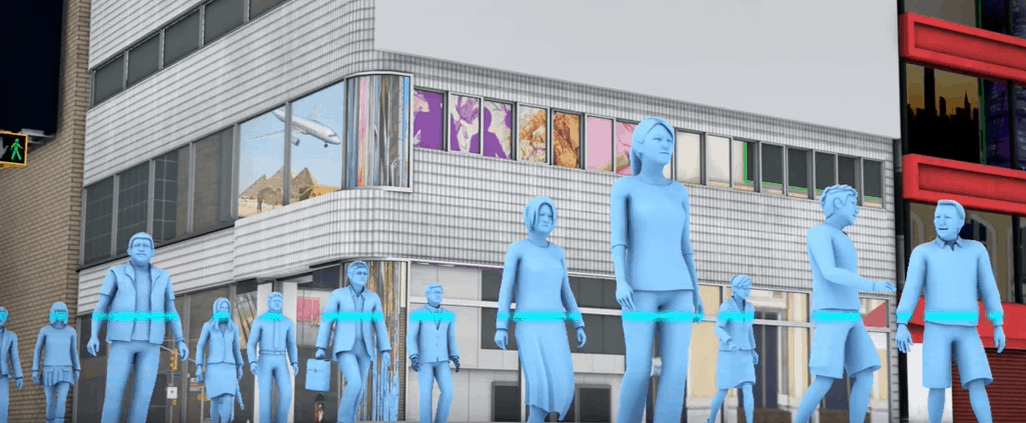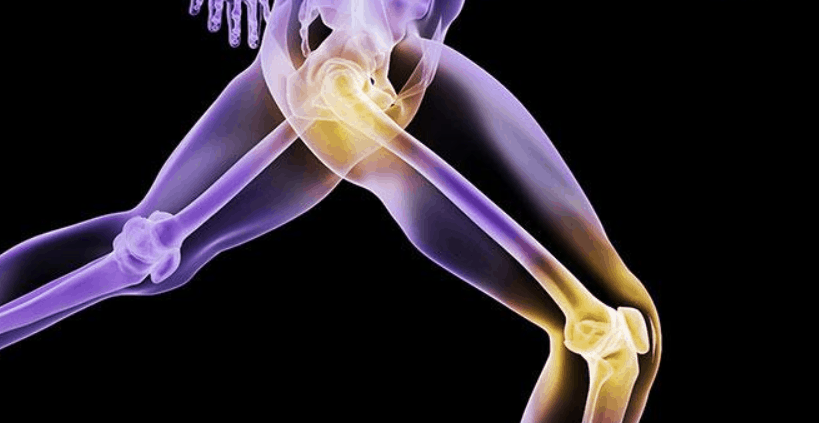Trend Letter Blogs
Market Charts – April 5/22
US stocks faltered on Tuesday, dragged down by losses in tech, as investors weighed remarks by Federal Reserve Governor Lael Brainard that indicated policymakers were ready to act more aggressively to rein in inflation. Investors also monitored reports indicating the US and European Union are expected to unveil more sanctions against Russia on Wednesday. The […]
Market Charts – April 4/22
Stocks on global indexes rose on Monday, with the Nasdaq and growth names leading gains on Wall Street, while the US dollar strengthened on talk of more sanctions against Moscow following international outrage over Ukraine civilian killings. Adding to investor caution, the 2-year/10-year Treasury yield curve remained inverted, signaling to some market watchers that a […]
Market Charts – March 29/22
(From Yahoo)…Stocks rose while US crude oil prices fell for a back-to-back session amid signs of progress in Russia-Ukraine talks. Russia said it was easing military action in Ukraine’s capital Kyiv and northern city Chernihiv and was prepared to set a meeting between Russian President Vladimir Putin and Ukraine’s President Volodymyr Zelensky following a draft […]
Signs of a coming recession?
Are we headed for a recession? There are a couple of indicators that have accurately signaled the last number of recessions. The bond market is a bit of a mess. Treasury bonds have been getting killed for the third day in a row, taking ten-year yields back above 2%. It is a bit unusual given […]
Market Charts – March 14/22
(From Yahoo finance)…Stocks erased earlier gains to close mostly lower, with investors looking ahead to the Federal Reserve’s next monetary policy decision later this week amid an ongoing war in Ukraine and soaring inflation. The Dow Jones Industrial Average erased earlier gains of as many as 451 points to end little changed by market close. […]
Market Charts – March 8/22
(From Yahoo finance)…Concerns over the impact that the punitive measures countries and companies have taken against Russia have weighed on US equity markets. The S&P 500 dropped another 0.7% on Tuesday to bring its year-to-date losses to 12.5%. The Dow shed more than 0.5% to sink further into a correction, while the Nasdaq Composite extended […]
Market Charts – March 7/22
Stocks extended declines on Monday and oil prices soared as investors nervously considered the potential for even higher inflation and greater global economic damage from Russia’s war in Ukraine and sanctions that have ensued. The S&P 500 closed down nearly 3% at 4,200.89, its worst day in more than a year, while the Dow fell […]
Market Charts – March 3/22
(From Yahoo finance)…The S&P 500 index fell 0.5% during the regular trading day as technology and growth stocks came under renewed pressure, and the Nasdaq Composite dropped nearly 1.6%. Treasury yields steadied after sliding earlier this week, and the benchmark 10-year yield hovered above 1.8%. A fresh set of economic data due for release Friday […]
Market Charts – March 2/22
Investor focus turned to Powell’s testimony before the House Financial Services Committee on Wednesday, during which the Fed chief said explicitly that he would back a quarter-point interest rate hike following the Fed’s March meeting later this month. Powell left open the possibility that the Fed would raise interest rates and tighten more aggressively later this […]
Market Charts – March 1/22
(From CNN)… March is looking a lot like January and February on Wall Street. That’s not good news for investors. The Dow fell nearly 600 points Tuesday, or 1.8%, one day after stocks capped off their second straight month of declines to start the year. The Dow managed to finish off its lows of the day though. The Nasdaq and S&P 500 were […]
Market Charts – February 28/22
Yesterday, the US and its allies ramped up their sanctions against Russia when they announced that certain Russian banks would be shut off from SWIFT. That’s a global messaging system used by banks worldwide to conduct their business and issue payments. It’s a key system when it comes to a country’s ability to participate in […]
Market Charts – February 24/22
The market was initially spooked by Moscow’s invasion against neighboring Ukraine early Thursday morning local time, using land, air and naval forces. The S&P 500 was down as much as 2.6% during the session but closed up 1.5% higher despite the outbreak of violence. As we had been highlighting, if the S&P 500 tests the 4200 level […]
Market Charts – February 23/22
(From Yahoo Finance)…Stocks extended losses on Wednesday after a steep sell-off during Tuesday’s trading day, which pushed the S&P 500 and Dow to their lowest settlements so far of 2022. The S&P 500 wiped out early advances to trade sharply lower in afternoon trading. The blue-chip index had also closed lower by just over 1% […]
Market Charts – February 22/22
The S&P 500 on Tuesday fell into a correction for the first time in two years, joining the Nasdaq Composite, as Russia sent troops into pro-Russian regions in Ukraine. The S&P 500 index SPX, closed at 4,304.76, below the correction level at 4,316.91, which would represent a 10% drop from its Jan. 3 record close. […]
Market Charts – February – 21/22
North American markets were closed today, but we wanted to give investors a heads up as we head into a new week of trading. As we have been highlighting the last couple of weeks, near-term support for the S&P 500 sits at 4300, then 4200 (green horizontal lines on chart). As Martin highlighted in his […]
Money Talks interview with Martin Straith
Martin was the guest on Michael Campbells’ Money Talks podcast this weekend. Topics included how to protect your investments and investing in Psychedelic therapies.
Market Charts – February 18/22
Stocks extended declines Friday to close a second straight week in negative territory with geopolitical tensions intensifying to contribute to a further risk-off tone in markets. The S&P 500 fell 0.71% to 4,348.97, building on a 2% loss in the previous session, while the Dow Jones index closed down 0.68% to 34,079.12 after erasing 1.8% […]
Market Charts – February 15/22
The S&P 500 closed higher by 1.6% in its first rise in four sessions. The jump came amid an announcement from Russia that it had pulled back troops near Ukraine and was seeking to continue diplomatic efforts with the West. However, President Joe Biden said during a news conference Tuesday afternoon that a Russian invasion […]
Market Charts – February 14/22
Stocks fell Monday as investors eyed the escalating threat of Russian invasion in Ukraine alongside ongoing concerns over inflation and an aggressive move toward policy tightening by the Federal Reserve. The S&P 500 came off session lows but still ended in the red to extend losses after last week’s roller-coaster sessions on Thursday and Friday. […]
Market Charts – February 11/22
(From Yahoo News)…Stocks added to Thursday’s losses as jitters over a swift tightening of financial conditions increased on the heels of a multi-decade high print on inflation. Fresh geopolitical concerns between Russia and Ukraine further weighed on stocks and sent oil prices soaring to a fresh seven-year high. The S&P 500, Dow and Nasdaq fell […]
Trend Technical Trader Subscriber Only Blogs
Nothing Found
Sorry, no posts matched your criteria
Trend Disruptors Blogs
Is it ALL Disruptive?

Is it ALL Disruptive?
We have never been through times like these, as the novel corona virus (COVID-19) ravages populations and economies across the globe. Globally, the disease continues to spread, although it looks like China has gotten past their peak. What many would view as draconian measures seem to be what it took for China to get past being the epicenter of the pandemic. The rest of the world has not reached the peak, so there is no end in sight for us in the Western world. There are many strategies, rules, policies, and protocols enacted to “flatten the peak” and each day, each hour, these rules get more stringent. We must escalate the fight to stop the spread of Covid-19 and return our lives to something we can call normal and cope with more easily.
The mission of TREND DISRUPTORS is to explore and monitor scientific and technical developments, looking for the brightest ideas; those that have the potential to “disrupt” a market sector. We publish relevant investment recommendations for our subscribers and publish blog articles discussing many new technology developments. To date we have focused on technologies such as Artificial Intelligence (AI), Augmented Reality (AR), Quantum Computing, 5G, Blockchain, Autonomous vehicles, and Virtual Reality (VR). In the investment world today there is mostly chaos, with the DOW-JONES and S&P indexes tumbling into recession territory. As investors looking for “disruptive” opportunities we will seek out companies using technology to be useful and profitable in the new reality of this global pandemic. So, here are some general ideas that could lead to profitable investments, but as with all disruptors, these ideas are speculative and we advise caution and restraint.
Home Delivery: We all still need food and many other items, so in this time of isolation we will more than ever need items brought to us. We can’t easily go out to stores, and we can’t eat in restaurants, or drink in our favourite establishments. There are companies that use technology in very innovative ways to bring us what we need, in a way that preserves social distancing and isolation. Consider the many companies that are participants in all facets of home delivery services.
Home Entertainment: Many of us are self-isolating in our homes and we need to have our sources of entertainment. Live sports on TV are just about all postponed, and children need to have alternative sources for education and entertainment. Streaming services and social media can offer a wide range of choices, such as learning programs for all ages, video gaming, and other traditional entertainment like movies and TV shows. Digital networks are becoming overburdened and 5G technology should offer a good solution. Consider all the companies that offer streaming services and social networking, as well as those providing 5G networks for increased performance.
Video Contact: Individuals and businesses need personal contact, but traditional forms such as meetings and family dinners are off the table. The technologies for video meetings and conferences are already with us and are being improved at a rapid pace. Video chatting with friends and family is also with us now, and is very important, especially for individuals self-isolating all alone. Consider all those technology companies that provide these services and are working to develop improvements. Again, 5G implementations should help to speed up these services.
Bio-medical Innovation: Perhaps the most pressing need right now is for the multitude of supplies and equipment required to deal with those who are sick. Also needed is the development and approval of new drugs to provide a cure for COVID-19 and provide a vaccination for ongoing immunity. Consider the companies that are at the forefront of new drug development, and those companies that are ramping up or retooling to produce the much needed supplies and equipment.
The other critical resource to consider is all the workers who are on the front line of our health care services. They need our support and the support of government at all levels. Without these workers, and all the others who contribute to a solution, we would be in far worse shape – our present and our future would be a lot grimmer. We are all in this together as we continue to strive for good physical health and good financial health.
Trend Disruptors is monitoring new scientific developments and technologies, and will identify relevant investment opportunities, leading the well informed investor towards a healthy and prosperous future. TD Premium subscribers can expect some new recommendation out in the next week or so.
Stay tuned …
How else can we train the brain?

The human brain has often been likened to a computer, in that it will receive input, process that input, and yield an output. That is a simplistic analogy to start with, but if we add in the brain’s ability to “learn” from every interaction and intervention then we get a better sense of what our brain is truly capable of. We have computers that also “learn” as they go along and we label that as “Artificial Intelligence” – the computer trying to do what the brain already does.
We can externally observe and map brain activity, and we can also theorize about brain synapses being electrically fired, allowing us to think, to process, to feel, to do all those things the brain is in control of. Most of our muscles can be directly controlled by our brain; we just think about lifting our legs to climb stairs and our leg muscles obey. Other muscles can be indirectly controlled by the brain, even though they will continue to function without any thinking required, such as our heart and diaphragm. We can decide to breathe deeper or hold our breath for a time, and fear can cause our heart rate to increase, but these are indirect and/or temporary brain interventions.
Training our brain is happening all through our life, as we learn to cope with the world we live in. We learn from those around us; parents, siblings, friends, co-workers, and all of that learning is accomplished using all of our senses. Our five senses provide input to the brain, and we process our inputs, learning how to survive, improve, and generally progress. There is one sense that is dominant in our physical activities and reactions – vision – which contributes 80-90% of total input. Neuroscience research is positing that by improving vision input to the brain, the brain can respond in beneficial ways. We all know that success in some aspects of our lives can come down to a matter of millimeters and/or micro-seconds, especially in sports at the elite level.
There are several aspects to vision, and what we know most about is acuity, the ability to see things clearly, and we also know that acuity can be improved with aids like contact lenses and glasses. But beyond acuity is what our brains can do with vision inputs, things like hand-eye coordination, visual tracking and spatial awareness for good decision making. Neuroscientists can work with behavioral optometrists to train for improved athletic performance by providing specific exercises for the eyes. The job of the eyes is to transmit visual data to the brain, allowing the brain to process the data quickly and then tell the eye where to look next. Specific eye exercises can be designed to calibrate the eyes to move around as fast as possible to the next target, consistent with the brain’s understanding of the visual data just received and integrated with all other sensory inputs, like sound and touch. The brain can process images that the eye sees for as little as 13 milliseconds, so training the brain with vision improvement exercises has great potential for improving overall athletic performance, when millimeters and milliseconds can mean the Gold Medal, instead of Silver or Bronze.
There are at least 10 vision skills used in daily activities, and below are seven of the most important for transmitting accurate and useful vision data to the brain, where that data needs to be processed quickly and precisely.
The brain can be trained to respond in the most beneficial way for every situation, given that the received visual data is of a very high quality. Achieving that high quality is what specific eye exercises are designed to promote.
The seven most important visual skills needed to achieve high athletic performance:
- Eye Movement: first step is to have both eyes move in synch
- Colour Perception: to determine friend or foe, or slow down / speed up
- Alignment: both eyes working together for accurate target tracking
- Depth Perception: precise location of targets in 3D space
- Peripheral Vision and Awareness: seeing targets at the outer edges of your visual range
- Focus: sustained in-focus binocular vision for moving targets
- Visual Perception: being highly aware of everything in your visual field
The bottom line is that human athletic performance can be enhanced and optimized by developing and training the eye to be a high performance organ. Coupled with personalized, appropriate brain response training, individuals can see their eyes as not only a window to the soul, but a window to the brain and a higher success rate.
Trend Disruptors is monitoring these scientific developments and technologies, and will identify relevant investment opportunities to lead the well informed investor to success.
Stay tuned …
Who goes there?
An ongoing challenge to modern society is how best to identify who we are, and who are all those other people out there. We used to be able to carry a card in our wallet or purse that reliably identified who we are. We could carry a birth certificate, a driver’s licence, a passport, or some other government issued identification that included a photo, to assure everyone that we are who we say we are. As technology progressed so did the ability of those with nefarious intent to replicate those card or document based forms of identification. Identity theft is on the rise and it is something we all need to be aware of and take steps to prevent. Even with secret PIN codes and CHIP card readers, bank cards (credit and debit) have been criminally duplicated, and phony automated teller machines (ATM’s) have been set up to capture user info, like account numbers and PIN codes. Today, the costs of identity theft are significant – for individuals and corporations. It is very telling that in the last four months of 2019 the number of users losing secure control of financial accounts was up by 330%.
Technologies are being developed and refined to reliably identify individuals, however, there are societal issues that have to be considered. The debate carries on, pitting the need to reliably identify a person against that person’s right to privacy. With artificial intelligence (AI) technology there are many new and reliable ways to identify people. Governments and financial services corporations make a strong case for deploying new identification technologies. Solving and preventing crimes is a benefit of these technologies, but is a reduction in, or security of, personal privacy too big a price to pay? As the debate continues, let’s have a brief look at the range of technologies that are available now or are being developed and refined in the lab.
Facial recognition: Using high resolution cameras and large databases, these systems can quickly and accurately identify individuals. These systems rely on the individual’s face being in a searchable database. Many of these systems are being tested for police work and screening at airports and public events. Its use is still controversial and it is relatively expensive, requiring high powered cameras and computer hardware.
Vein matching: This type of scanning is gaining in popularity as it does not rely on a scanner touching the body, as with fingerprinting, or a light beam being shone into a person’s eye, as with iris scanning. It was first developed in the 1980’s and has been steadily improved, striving to achieve a reliability level equal to fingerprinting. Typically this technology scans an individual’s hand or finger to look for a match to a known vein pattern.
Gait recognition: This technology relies on the uniqueness of a person’s walk, or gait. There may be only slight differences among us all, so the measurement technology needs to be very sophisticated and precise, to discern those differences. When gait recognition is used with one or more other biometric measures, it can provide an additional assurance of accurate identification.
Heart recognition: A low radiation Doppler radar device can identify your heart in two ways; one by the shape of your heart ( a static measurement ) and the other by the unique beat of your heart ( a dynamic measurement ). Tests have yielded accuracy rates above 98%, but there are no operational deployments just yet.
There are other well known biometric measures, such as fingerprinting and iris scanning, both of which have been deployed successfully for several years. The advantage of biometric measures is that they are very difficult (impossible?) to replicate or spoof. However, we are all probably aware of novel and movie plots where fingers, thumbs, and eyeballs are removed from their owners just for the purpose of “fooling” a biometric scanner. The newer biometric measures strive to get beyond that, but the invasion of privacy and protection of privacy concerns are yet to be fully resolved.
To the person or corporation that has been victimized by identify theft it may be easy to say “bring it on – I need these new technologies”. To those who want to stay “off the grid” or those who have had their personal data stolen or compromised it may be easy to say “it has gone too far – there is too much data being collected to effectively protect”. Time will tell how or if these issues get resolved.
Trend Disruptors is monitoring these developments and technologies, and will identify relevant investment opportunities that lead the well informed investor to success.
Stay tuned!
Fresh ideas – an EV that breaks the mold?

Electrified cars are approaching mainstream acceptance and adoption, be they a hybrid or a full fledged Electric Vehicle (EV). There is widespread concern about the continued burning of fossil fuels, and electrification can resolve a lot of that if the electric power is generated without burning fossil fuels ( hydro-electric versus coal or diesel fired power plants ). To date, most EV manufacturers have looked to the past in designing vehicles that replicate a look that was dictated by the need to accommodate internal combustion engines and their associated power trains. With an EV there is no traditional power train or engine to accommodate – it’s all different – so why not re-think vehicle design to take full advantage of this, and while we’re at it, why not re-think the way vehicles are accessed by the driving public?
An EV body needs only to sit atop the electric motor(s) and battery platform and can therefore be dramatically different than what we are used to. Given these different parameters, the vehicle interior space can be configured for more comfort, more practicality, and more capacity. One new manufacturer has taken these ideas and many more to develop an EV that breaks the mold and takes us into a new world of possibilities. The manufacturer is CANOO, based in Los Angeles, and you can explore these websites to see what we mean:
https://www.canoo.com/
https://vimeo.com/canoo
Another innovation of CANOO is that you will not be able to “purchase” the vehicle, you can access it only with a monthly subscription, and the subscription can be postponed, cancelled, or renewed, without a contract. The subscription will include all maintenance and updates. It seems that this way of accessing a vehicle will not always get you a “new” vehicle, but you will get one that is fully maintained and updated. In certain markets, Volvo also offers a subscription plan, and it includes car insurance. This could get complicated in jurisdictions where public, private, or a mix of insurance options are in play. The subscription model is certainly innovative and convenient. CANOO estimates up to 20% savings on their end by not having to support dealerships. This contributes to affordability and may prove to be a compelling and disruptive way for the public to have access to modern, efficient vehicles. Ownership may become passé.
While CANOO is a privately held company at this point, we feel that there are ways to indirectly invest in this market, as many components can be sourced from large publicly held companies. Battery components, electric motors, tires, and many other parts can be supplied by existing companies with good track records and good future potential for investors.
Disruptive technology and design takes time to create, develop, and blossom. CANOO expects to be fully in business within the next two years, starting in the Los Angeles and California market, and later expanding to eastern USA. Success in USA may lead to expansion elsewhere, and may inspire other companies to join in with these innovations. The way we view “having an automobile” may be changed forever, benefitting our pocketbooks and our environment.
TREND DISRUPTORS is monitoring these developments, and will identify investment opportunities leading to success for the well informed investor.
Stay tuned!
Cancer cure – can we afford it?

The biomedical community has a lot to be excited about as the “cure” for cancer gets closer than ever. It may now be in sight, with just a bit more testing, fine tuning, and approvals required. The new treatments are achieving cure rates above 80%, and achieving it with patients who have not responded to more traditional treatments, like chemotherapy. The concept of a “cure” in this case includes the use of modified cells working inside the body to actively hunt down and destroy cells they recognize as “not normal”. These “not normal” cells are cancer cells. Unlike chemotherapy, which destroys good and bad cells, these new treatments attack only the bad cells – the cancer cells.
Earlier treatment methods used synthetic antibodies, as they have the ability to flag bad cells, like cancer, and trigger the immune system to destroy them. Antibodies are quite versatile and can be developed to bind to almost any target in the body, even crossing the blood-brain barrier to bind to targets in the brain. Moving forward from synthetic antibody treatments, researchers are now using CRISPR cell editing technology to edit a patient’s white blood cells (T-cells) outside the body, grow millions of the edited T-cells, and then infuse them back into the patient’s body. As the newly modified cells circulate in the body, they attack and destroy any cancer cells they run into. This new immunotherapy is called “Chimeric Antigen Receptor T-Cell Therapy, or, more simply, “CAR T-Cell Therapy”. This therapy is expensive, as it is complex and highly personalized. It also has some harsh side effects, and researchers are working hard to increase safety and reduce all risks.
The early test results are very promising, however, the cost of such complex and individualized treatments can be close to $.5 Million each, making us question if such an effective therapy can be brought into the realm of general affordability, thus making it the true breakthrough we have all been looking for. There are several initiatives that could move us closer to the goal, such as:
- developing a universal donor CAR T-Cell, allowing for the treatment of multiple patients using the same modified T-cells manufactured in bulk
- increasing the survival rate and activity rate of CAR T-cells, and enhancing their ability to call in other cells to help with the destruction of cancer cells
- improving CRISPR technology to introduce more precise cell edits and accomplish multiple edits at once.
Given that progress will be made on these and other cost saving initiatives, the time may be very near when we can say that cancer has been conquered. The ability to empower our own good cells, modified a touch, to do battle with our own bad cells is a huge step forward. It certainly appears that we have the knowledge to finally implement an effective “cure” for cancer. The affordability issues are being worked on, and the future looks bright.
It is a big challenge for all the bio-tech firms involved, and they are competing hard to reach the finish line. These earthshaking improvements in cancer treatment are disruptive in nature and should present solid investment opportunities.
TREND DISRUPTORS is monitoring these developments and identifies investment opportunities that will lead to success for the well informed investor.
Stay tuned!
New genes for you?

The idea behind gene and cell therapy is to introduce organic material into a body that needs help. Bone marrow transplants, also known as stem cell transplants, infuse either your own stem cells (autologous) or someone else’s stem cells (allogeneic) into your body. This is done when your bone marrow no longer produces healthy blood cells, often a result of cancer treatments (chemotherapy). Stem cell infusion enables the body to once again produce healthy blood cells.
Stem cell therapy is well established in mainstream medicine. However, gene therapy has lagged behind, as the research is difficult, and one infamous human test failed badly, ending in the death of the patient. The idea with gene therapy is to introduce a healthy gene into the body, replacing all of the unhealthy genes, such as the gene that causes Cystic Fibrosis. The idea is sound in that we can now positively identify problem genes and we can identify and isolate good genes to replace them with. The really difficult part is finding a safe and effective way to get the good gene into the body; that’s where viruses come in, as viruses can be used to carry the good genes into the body. Finding a safe and effective virus has been the challenge for several years, as many viruses, even when used as just a carrier of a good gene, can be rejected by the body and cause severe problems, even death.
The original virus used as a gene carrier was “adenovirus”, which elicited problematic immune responses in humans. However, the research moved on to “adeno-associated” virus (AAV), trying to reduce immune system responses. Researchers isolated over 120 AAV variants and eventually settled on AAV9 as the best of breed. This is the variant used in gene therapies today – all of this after about 20 years of development and testing.
Gene therapy is finally ready to enter the medical mainstream and it will attempt to tackle many conditions that have had no effective treatment until now. There are over 900 companies, large and small, developing new cell and gene therapies. In the USA the Food and Drug Administration (FDA) has reported a sharp increase in “Investigational New Drug” (IND) applications, all of which have to do with cell and gene therapy treatments. IND’s are an early step in gaining market approval in the USA. Here is the press release from the FDA:
“We anticipate that by 2020, we will be receiving more than 200 [cell- and gene-therapy] INDs per year, building upon our total of more than 800 active cell-based or directly administered gene therapy INDs currently on file with the FDA. And by 2025, we predict that the FDA will be approving 10 to 20 cell- and gene-therapy products a year based on an assessment of the current pipeline and the clinical success rates of these products.”
A big challenge for all of these bio-tech firms is to have enough raw materials for the development and testing of new treatments, so ramping up manufacturing needs to happen very soon. It is clear that the science is sound and the demand is here, so it is important to keep an eye on those companies that will have the capacity to provide materials like AAV9 in the quantities required.
These groundbreaking changes in medical treatments are disruptive in nature and should present solid investment opportunities.
TREND DISRUPTORS is monitoring these developments, and identifies investment opportunities that will lead to success for all well informed investors.
Note: Premium subscribers were just sent a new recommendation in this sector that we feel is in an excellent position to benefit from a major biotech boom.
Stay tuned!
5G – Mobile or Fixed ?

The fifth generation of mobile networks (5G) is ramping up at an increasing rate, with more live locations being added every few weeks all around the globe by all the major mobile network providers. It won’t be long before we will be asking ourselves if it is now time to make our move to this advanced technology. The dramatic increase in speed alone will be a major motivator, but there are other benefits, such as reduced power consumption and more reliable and responsive internet connections. What is not so well known just yet is that 5G can be implemented in two different ways – Mobile 5G or Fixed Wireless Access (FWA) 5G, and here are some of the differences and why you might choose one over the other.
Mobile 5G: This is the simplest implementation and requires only that you invest in a 5G mobile device (Smartphone) and a usage plan with a 5G mobile network provider. The process is familiar, as it is the same as starting up with a new Smartphone. What may be different is the cost, and costs could be impacted by the amount of data you will want when the speed is so fast. Given all that speed, network providers will likely offer large or unlimited data plans. The increased bandwidth and speed of 5G is the main reason it is being developed, and consumers are already lining up to get on board for these benefits, and for many consumers, cost is not a barrier. Reliability of Mobile 5G will still depend on cell network coverage, the same as all other mobile networks, so choosing a mobile 5G network provider should include an awareness and analysis of the provider’s 5G network coverage.
Fixed Wireless Access (FWA) 5G: This implementation of 5G is intended for a fixed location, typically your home (or business). It requires some new hardware that will transform your home Wi-Fi network into a 5G network to be used by all Wi-Fi connected devices, which would typically and easily include your phone. The required new hardware includes a modem and antenna to access the closest 5G cell tower and a 5G router. The key to performance for an FWA setup is having a strong clear signal to your fixed location (home) from the 5G cell tower. Fixed 5G may not be offered as prolifically as Mobile 5G, but it does have benefits that providers and consumers should consider carefully. Of course, when you take your phone away from your fixed 5G network, it no longer has 5G access or capabilities.
The Hybrid Implementation: We may not have to definitively choose one or the other of the above 5G implementations if we use some existing technology to get both. Most Smartphones have a feature to set up a mobile Wi-Fi Hotspot, so you could acquire a 5G phone, set it up on a 5G mobile network plan, and then use that phone in your home as your Wi-Fi Hotspot. It would work ok, but performance depends on there being a good clear cell signal in your home. Whenever the phone or Hotspot is turned off, or the phone goes travelling outside the home, you are left with no Wi-Fi access in your home. When the phone returns home, the Wi-Fi Hotspot needs to be turned on again, and all home devices have to reconnect to the Hotspot. This has some inconvenience factors, but may be the right choice for some.
5G implementations are ramping up across the globe and we can all check with our local mobile network providers to see when they are going live with 5G, and whether they will be offering both Mobile and Fixed 5G implementations. Things are looking to get a lot faster … SOON !!
TREND DISRUPTORS is monitoring these developments, and identifies investment opportunities that will lead to success for the well informed investor.
Stay tuned …
AR – you ready for this?

Innovation and imagination often go hand in hand to bring new technologies into being and into the mainstream. Augmented Reality (AR) is one technology that is on the cusp of dramatically expanding its mainstream presence. Many of us remember how AR burst into the mainstream with Nintendo’s Smartphone game, Pokémon Go. This “activity” game showed us all how AR can integrate digital images with reality, but can AR go beyond entertainment, can it be put to use in other ways to enhance and improve the human condition? Here are some of the latest ideas and projects that aim to do just that, in a wide range of fields:
Medicine: There are many imaging technologies that provide information for medical practitioners, such as X-Ray, MRI, CT scan, Mammography, and Ultrasound. As digital images, they can be fed into an AR system to display in the real setting, such as in the Operating Room, hovering just above the patient undergoing surgery. The surgeon, wearing AR lens technology, can view these helpful images without taking his/her eyes off the surgical site – no need to look away at a nearby screen. Not looking away during critical moments is seen as one of the key benefits of many AR technology applications. Other healthcare applications in use or development include:
- showing nearby defibrillators on your Smartphone (more critical than Pokémon)
- showing phlebotomists and nurses the image of exact vein locations right on the patient’s arm
- showing patients what their medical condition would look like if left untreated, such as the consequences of cataracts
Military Defense: The safety of soldiers on a field of battle can be enhanced with the use of AR technology. “Radio Silence” is a lifesaver on the battlefield because modern scanning technologies can find and locate all radio frequency (RF) transmissions. The saying goes that” If you’re transmitting, you can be found”, so ensuring that you are NOT transmitting can be a lifesaver. The US Navy is testing a prototype AR system that can detect and display any RF transmission. This allows the user to detect and turn off transmitting sources located on themselves, as well as detecting all other RF transmission sources. The system uses a specially designed AR heads-up display, which superimposes RF waves over heavy sunglasses in the real-world environment. This replaces older, bulky portable tablet type devices that located RF signal sources. This hands-free display allows the user to keep his eyes on the battlefield at all times, a critical need in dangerous situations. The system responds to voice commands or hand gestures to navigate through various bits of information about the detected RF signals, helping to locate and deactivate the transmission source.
Sports Training: Amateurs and professionals in various sports are always looking for more and better ways to train and get motivated, with the goal of enhancing performance. One of the interesting and somewhat amusing AR applications for sport and fitness is a game called ZOMBIES, RUN. This game plays on the knowledge that fear can motivate, and that turning a boring activity like running into a game can make it seem like fun. The game runs on your phone and provides various ZOMBIE Missions, with scary audio sounds and narrations (use your earphones), as well as visuals on your phone screen if you have the nerve or time to look at your phone while running from Zombies. Other sports could have other motivators, such as being presented with the Stanley Cup or an Olympic medal. With AR technology all kinds of visual and audio elements can be added to your surrounding reality, such as bicycle riding with Tour de France competitors nipping at your rear wheel or passing you by. The possibilities are many and varied – just use some imagination.
Technology can be empowering and beneficial in many other facets of our life, helping us to unwind, decompress, relax, and enjoy life. AR gaming and entertainment is making huge advances, and Virtual Reality (VR) gaming is already a big industry.
Trend Disruptors keeps a close eye on new technology developments, and recommends companies to invest in that will lead to success for the well informed investor.
Stay tuned!
Can you make your brain wave?

Some technologies start off as science-fiction, as they are often difficult to visualize and difficult to execute. Space travel and rocket ships started out this way, like so many innovations over the past 100 years. Medical technology also has made great strides that were unimaginable just a few years or decades ago.
One of the concepts trying to cross the line to reality is the ability to link the human brain to a digital computer, a concept that Elon Musk has termed the Brain-Computer Interface (BCI). This radical concept has been around for almost 50 years, as research was conducted in the 1970’s at UCLA, funded by DARPA (US military) and The National Science Foundation. This early research was conceptual, producing no working models. Today we have relatively crude communication with the human brain via EEG’s, which sense and record brain wave patterns using an array of electrodes on the scalp. The interesting observation is that the neurons of the human brain use the same power source as digital devices like computers – electricity. So – why not develop ways for electro-fired neurons in the brain to communicate with electro-fired transistors in digital devices? We can now envision a BCI with some very useful applications, such as allowing amputees to have control over robotic arms and legs by just using their minds.
The technology is based on electrical impulses, as the brain sends and receives messages through the body’s nervous system. Nerve cells (neurons) receive and pass along these electrochemical pulses back and forth throughout the body. These cells operate on an all-or-nothing condition – they are either on or off, and this is eerily similar to the way transistors in a computer’s integrated circuit operate. This comparison is very simplistic, and we cannot say that the brain uses conventional binary logic exactly like a computer, but neurons do rely on the all-or-nothing state to function. Each and every sense, muscle movement, feeling, and thought is a result of the electro-firing of neurons in the body.
Capturing neuron activity, and doing so quickly and at a high resolution, is the key to getting the data required to eventually decode the true and complete messages the neurons are sending along. Once we have the decoded messages we can pass them along to a digital device, such as a computer or robotic arm. We are a long way from having a functioning, practical, and useful BCI, but there is progress being made by several technology companies to develop ways to better detect and capture neuron activity. Currently, there are inventions being developed that will capture much more neuron activity than the external electrodes now in use, such as thin-layer implants that can insert an electrode “sheet” directly on the brain. Imagine the day when we can simply think about waving a robot’s hand, and that brain wave will actually cause the robotic hand to wave. This still sounds a bit like science fiction, but now we can visualize some of the very useful and helpful things that could be done.
Technologies like this bring about a number of ethical concerns and a question, as is the case with many of the new medical innovations, but the human mind is a very powerful thing, and also a very curious thing. Who is to say where the boundaries of our curiosity should be set? Can we now imagine all the experts, theologians, and politicians who will try to get it right – let’s give them all a wave.
Check out this video showing how a monkey was able to control a robotic arm with its brainwaves to eat marshmallows.
Trend Disruptors is monitoring these developments, and will recommend companies to invest in that will lead to success for the well informed investor.
Stay tuned!
Best Joints Ever?

An aging population will always have needs that are specialized and unique, and there is every indication that new technologies will be developed to meet those needs in innovative new ways. Baby Boomers were the largest population bulge up until 2016, and now their numbers are starting to dwindle, being slowly eclipsed by Millennials. However, no matter which generation predominates, people will always be getting to that stage in life where medical assistance and intervention become a critical factor in maintaining quality of life. In the USA, people over the age of 65 are forecasted to be 20% of the population by 2050, up from 15% today.
One of the frequent occurrences with the elderly is the deterioration and failure of important body joints, like hips, knees, shoulders, elbows, wrists, and ankles. Hip and knee joint replacements are very common today, using manufactured replacement parts, but these parts can wear out long before the patient does. New technologies are being developed to improve the longevity of such parts, and the ideas include some interesting uses of technology already in place, such as 3D printers. The industry calls this new kind of fabrication “additive manufacturing” facilitating the production of medical implants that perform better inside humans than anything built previously.
Additive Manufacturing is a new way to build medical implants, and replaces the traditional methods of molding or chiseling parts from solid blocks of metal, like titanium. Using a 3D printer, metal parts can be built layer by layer, with each layer being as thin as 1/50th of a millimeter. This allows the part to be designed and built with very intricate internal structures, and when these internal structures are very similar to human bone structure, the implant can bond more easily to the patient’s bones. These structured metal implants become securely fixed in place, fusing with real bone, which is known as “biological fixation”. Currently, medical implants are often fused to bones with medical-grade cement and that cement can break down over time and cause a loosening of the part. This will lead to another surgery to replace the replacement part that has come loose. Better fixation with better materials design should dramatically reduce this situation from occurring.
There is a market for medical implants beyond hips and knees, especially if the parts can be precisely built for individuals and be fixed firmly in place with biological fixation. For instance, spinal fusion implants will have to be individually tailored and not move around at all, as they will be very close to the spinal cord. Precision and improved fixation will be the watchwords for these new technology medical implants, and there are several companies actively exploring this new technology.
Trend Disruptors has been monitoring these developments and just sent out a new recommendation to subscribers of Trend Disruptors Premium. If you would like subscribe to Trend Disruptors Premium, we are offering a special discount of $200 off the regular price, so you pay only $399.95.













